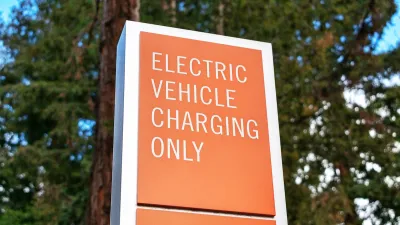Heat from industrial installations and buildings can be captured to create renewable electricity.

Scientists are working to develop devices that can harness waste heat from buildings and industrial uses to produce energy. As Muhammad Muddasar explains in The Conversation, most existing thermoelectric materials used to make such devices contain cadmium, lead, or mercury, toxic and often expensive substances.
Muddasar and other researchers at the University of Limerick and the University of Valencia have discovered a way to use wood-derived materials to convert waste heat. “This approach not only enhances energy efficiency, but also redefines how we view everyday materials as essential components of sustainable energy solutions.”
The research team used lignin, a byproduct of the paper industry, to convert low-temperature waste heat into electricity. “Since around 66% of industrial waste heat falls within this temperature range, this innovation presents a significant opportunity for eco-friendly energy solutions.”
In addition to capturing energy, thermoelectricity also requires storage solutions. Lignin-based porous carbon can also be used in supercapacitors to store energy. According to Muddasar, “This technology could find use in various settings, from providing power in remote areas to powering sensors and devices in everyday applications.”
FULL STORY: How waste heat could be captured and converted into green energy

Trump Administration Could Effectively End Housing Voucher Program
Federal officials are eyeing major cuts to the Section 8 program that helps millions of low-income households pay rent.

Planetizen Federal Action Tracker
A weekly monitor of how Trump’s orders and actions are impacting planners and planning in America.

Ken Jennings Launches Transit Web Series
The Jeopardy champ wants you to ride public transit.

Washington Legislature Passes Rent Increase Cap
A bill that caps rent increases at 7 percent plus inflation is headed to the governor’s desk.

From Planning to Action: How LA County Is Rethinking Climate Resilience
Chief Sustainability Officer Rita Kampalath outlines the County’s shift from planning to implementation in its climate resilience efforts, emphasizing cross-departmental coordination, updated recovery strategies, and the need for flexible funding.

New Mexico Aging Department Commits to Helping Seniors Age ‘In Place’ and ‘Autonomously’ in New Draft Plan
As New Mexico’s population of seniors continues to grow, the state’s aging department is proposing expanded initiatives to help seniors maintain their autonomy while also supporting family caregivers.
Urban Design for Planners 1: Software Tools
This six-course series explores essential urban design concepts using open source software and equips planners with the tools they need to participate fully in the urban design process.
Planning for Universal Design
Learn the tools for implementing Universal Design in planning regulations.
Heyer Gruel & Associates PA
Ada County Highway District
Institute for Housing and Urban Development Studies (IHS)
City of Grandview
Harvard GSD Executive Education
Toledo-Lucas County Plan Commissions
Salt Lake City
NYU Wagner Graduate School of Public Service





























